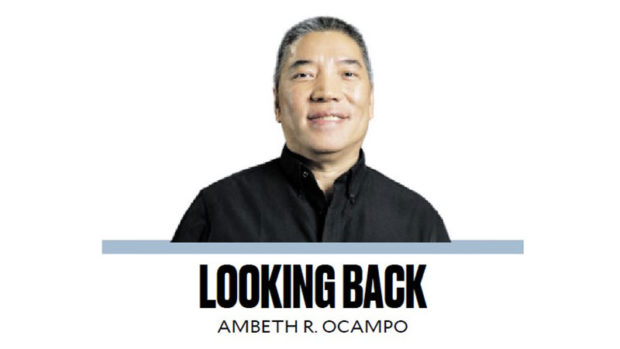Bagong Pamantayang Tagalog, a Facebook page that I highly recommend, isn’t just for lexicographers. Its content is relevant to anyone interested in Philippine history and languages. One of its posts featured a screenshot from the 1794 book “Vocabulario de la lengua tagala” by Fray Domingo de los Santos. The book translated the Spanish word “natura” into the vulgar Tagalog terms “otin” and “poqui.” Interestingly, other dictionaries from that period didn’t have translations from Tagalog to Spanish. In order to maintain modesty, these vulgar words were presented in Latin, perhaps to make them sound more scientific or to make it a bit more challenging for readers to understand. What sets De los Santos apart is that he doesn’t just provide translations and definitions, he also includes examples of usage. For instance, he gives examples like “Otin nang Ama mo” and “Poqui nang Yna mo.” When I saw this post, I finally understood the origin of the curse phrase “Boua ka nang ina mo,” as the next word in the screenshot, “boua,” turned out to be a synonym for “poqui.”
Back when I was a college undergrad, I wrote a term paper on Tagalog curse words. I compared the entries I found in Vito C. Cruz’s “Vicassan’s Pilipino-English Dictionary” (1978) with those in the Jesuits Juan Jose de Noceda and Pedro de Sanlucar’s “Vocabulario de la lengua tagala” (1860). The works of Bienvenido Lumbera and Doreen Fernandez inspired me. Lumbera explored early Tagalog poetry through vocabularios, while Fernandez reconstructed ancient Filipino cuisine by analyzing the abundance of food-related terms in vocabularios. Now, I introduce vocabularios as primary sources for historical research on the first day of my class.
One of the thought-provoking questions I ask my students on the first day is, “What is the oldest thing you have ever held in your hand?” This question helps provide perspective and situates them in personal and historical time. Due to the pandemic, my freshman students often choose objects close to home, such as a grandparent’s hand, a father’s wristwatch, a family bible, or someone’s college yearbook. Regardless of the age of the object, I accept all answers as correct. On the first day, my goal is to foster a sense of friendship among my students before they enter into the competitive nature of the rest of the semester.
During my college years, the oldest things I held in my hands were two books from the 19th century found in the Ateneo Rizal Library: “Arte de la lengua tagala, y manual tagalog para la administracion de los Santos Sacramentos” by Sebastian de Totanes (1850) and “Vocabulario de la lengua tagala” by Noceda and Sanlucar (1860). These books contained many censored materials which served a purpose as internet porn didn’t exist back then. After college, I revisited the “Vocabulario” for a presentation about rice at a food conference in New York University. Since then, I have collected various Tagalog dictionaries, including an offset reprint of the very first “Vocabulario de la lengua tagala” compiled by Fr. Pedro de San Buenaventura and published in Pila, Laguna in 1613. The most readable ones so far are by Domingo de los Santos (1794) and J.V. Panganiban’s “Diksyunaryo-tesauro Pilipino-Ingles” (1972) because they provide context and comparisons, not just word meanings.
These old dictionaries reveal the names of rice varieties from the 17th to 19th centuries, most of which are now extinct, except for a few preserved in the International Rice Research Institute Genebank. Rice, our staple food, used to be a medium of exchange, similar to metal cash in copper, silver, and gold. The phrase “nag-papalay ang coblador” indicates that tribute could be paid with unhusked rice (“palay”) or clean husked rice (“bigas”). A single grain of rice was called “capalayan,” while “sang palay” represented the lightest weight in gold. Cooked rice was referred to as “sinaing” or “morisqueta.” Toasted unhusked rice was known as “binusa,” and when it popped into blooms, it was called “binulaclac.” Interestingly, the same word was also used to describe welts on the skin after a whipping: “Nagin binulaclac ang cataoan nia nang hampas.” Pounded toasted rice that turned into a paste and was eaten was called “pilipig,” a favorite among children. You would often hear parents saying “Ypag pilipig mo ang manga bata.” Wrapped cooked rice was called “soman,” which is the Filipino version of Mexican tamales. “Soman” also referred to a tongue disease in children, hence the phrase “sinosoman soman yaring bata.”
Contrary to popular belief, the Spanish conquerors did not completely eradicate native culture. In fact, they preserved our languages in vocabularios, which are a testament to our history and culture through words. Feel free to leave comments at [email protected].
Subscribe now and gain access to The Philippine Daily Inquirer and over 70 other titles. With INQUIRER PLUS, you can also share up to 5 gadgets, listen to the news, and download articles as early as 4 am. Stay informed and connected!
Denial of responsibility! VigourTimes is an automatic aggregator of Global media. In each content, the hyperlink to the primary source is specified. All trademarks belong to their rightful owners, and all materials to their authors. For any complaint, please reach us at – [email protected]. We will take necessary action within 24 hours.


